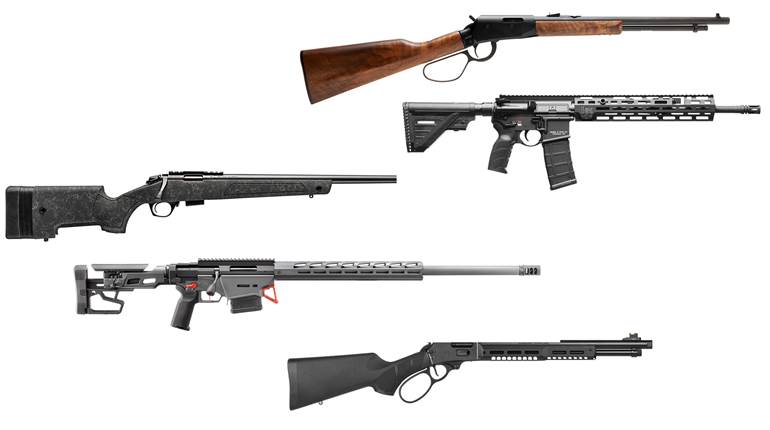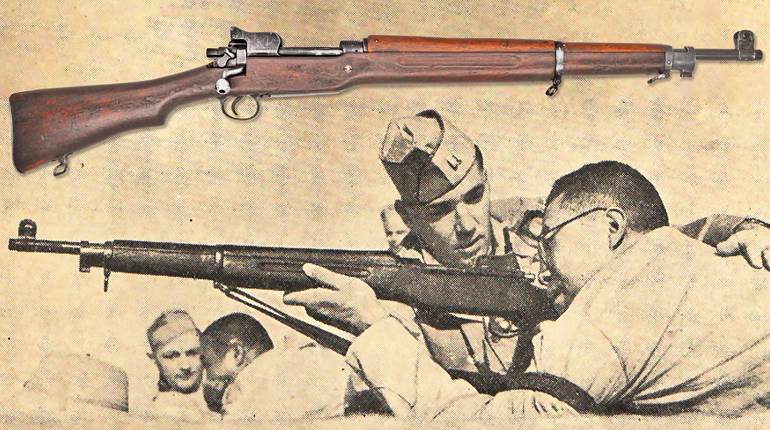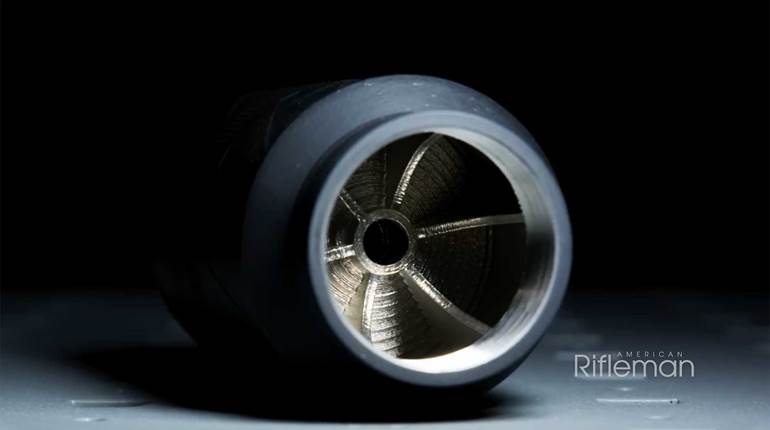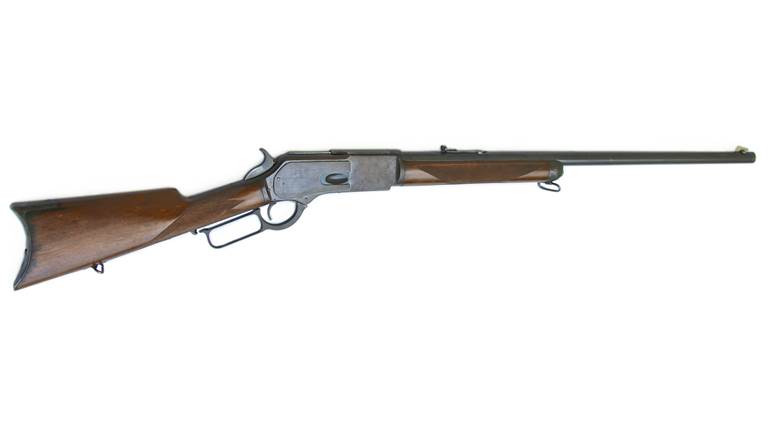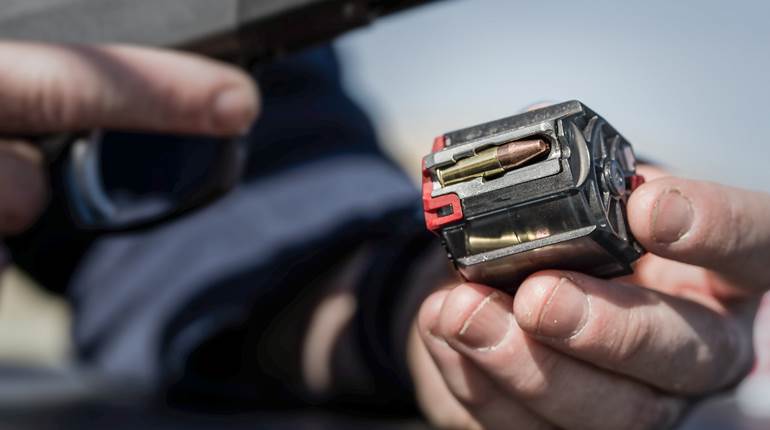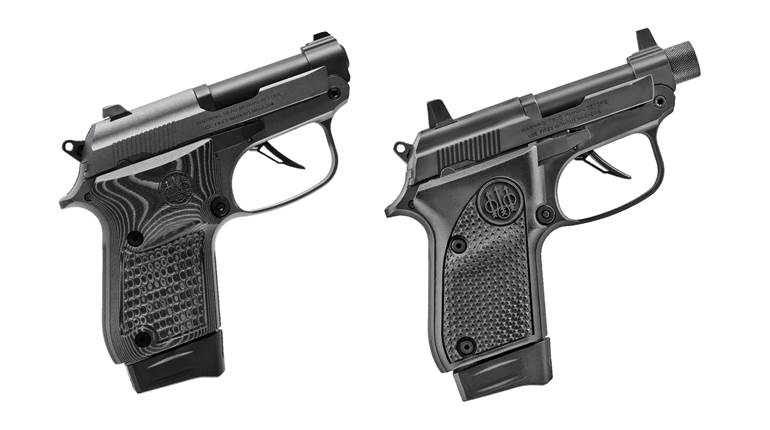
The airborne soldiers of Germany’s Fallschirmjäger were widely regarded as elite, specialty troops, and were organized under Hermann Goring’s Luftwaffe (Air Force). During World War II, Germany fielded many successful semi- and full-automatic rifles, including a distinctive arm designed specifically for paratroopers, the Fallschirmjägergewehr 42 (FG42), a relatively heavy, selective-fire gun chambered in the German 7.92x57 mm service caliber (now commonly seen as 8x57 mm Mauser).
The gas-operated rifle was interesting in that its mechanism was so constructed that it fired in full-automatic mode from an open bolt and semi-automatically from a closed bolt, this being effected by two different sear/bolt-carrier notches. The workings of the mechanism itself depended on a long-stroke piston and bolt carrier that rotated dual locking lugs on the bolt head.
The FG42 was an interesting looking piece with a severely raked-back pistol grip, folding bipod legs, an integral spike bayonet and a 20-round magazine jutting out from the left side of the action. An expensive arm to produce, after about 2,000 had been built, the first model was re-engineered exploiting the use of carbon over manganese steel. Modifications were made to some of the gun’s internals, and the new design featured the addition of an improved muzzle brake and the aluminum bipod was repositioned. As well, the trigger group was made to be removable. The Type II’s stock (with the exception of the plastic panels on the reconfigured pistol grip) was wood, the magazine well gained a spring-loaded cover, the location of the safety was changed and a brass deflector was added. Sights involved a sophisticated screw-adjustable diopter rear and adjustable post front combination, both of which fold out of the way to accommodate the mounting of a ZF4 4X scope on an integral receiver rail.

Though heavy and slightly longer than its predecessor, the Type II FG42 received high marks from those lucky few to whom they were issued. As they came late in the war, even in its economized package it was not cheap. Probably no more than 7,000 were eventually made, making them extremely scarce on today’s market.
Enter SMG Guns of Decatur, Texas, a company specializing in high-quality replications of scarce World War II-vintage full-autos-turned-semi. It’s most challenging project to date, the SMG semi-automatic Type II FG42, is a slavish recreation of the original with workmanship on par with, if not exceeding, vintage examples. According to SMG owner Rick Smith, it was no mean chore to convert the original’s internals to fire semi-automatic only, but the task was achieved.
Though looking virtually identical to the authentic article, some manufacturing differences were necessary and prudent. Many parts that were stamped on the original are milled on the replica. The receiver, for instance, is fabricated from a 13-lb. block of 4140 steel, the finished product pared down to 2 lbs. Some parts, such as the gas piston head and recoil spring guide, are made from stainless steel, to mention only a couple of enhancements.
The buttstock is fabricated from laminated birch, and the fore-end, like the original, is solid. If you wish, a solid walnut buttstock can also be had through special order. Magazines are original, surplus Czech ZB26/30-types, though plans are afoot to manufacture new magazines in the future.

Disassembly, which is straight forward if you follow the manual, begins with depressing the buttstock release latch and pulling the butt off to the rear. Next, rotate the recoil buffer 90 degrees and remove it and the recoil spring and guide. The two-lugged bolt, which rides above the gas piston and resembles that of the Lewis gun, can then be removed.
While the FG42 comes apart like no other gun we’ve disassembled, if one follows the manual and instructional DVD that comes with each rifle, it can be accomplished with little consternation. Not difficult, but you’ve got to know the tricks.
As well as the necessary maker’s markings, the SMG FG42 has period-style German manufacturers’ codes and replicated view- and proofmarks. The guns are virtually made-to-order, so it’s possible for the buyer to request the code of his choice, along with some other details—within reason.
The basic finish is blue, with Parkerized details offered as options. While accessories are available for the FG42, the gun itself comes pretty much a la carte, with such items as the ZF4 scope, optics mount and sling being available as extras from separate sources. As of this writing a bayonet is offered from an outside maker for $175, or SMG will convert a customer-supplied surplus French MAS 36 spike at no additional cost.
 As far as shooting goes, our evaluation SMG FG42 functioned perfectly and provided quite acceptable groups, despite the long, rather creepy trigger pull averaging 8 lbs., 12 ozs., necessitated by its semi-automatic design. The rifle operated well with the three different types of ammunition, though it can significantly damage the brass upon ejection, many cases being too far gone to be reloaded. Despite sitting rather high on the receiver, the diopter rear sight was easy to access and adjust.
As far as shooting goes, our evaluation SMG FG42 functioned perfectly and provided quite acceptable groups, despite the long, rather creepy trigger pull averaging 8 lbs., 12 ozs., necessitated by its semi-automatic design. The rifle operated well with the three different types of ammunition, though it can significantly damage the brass upon ejection, many cases being too far gone to be reloaded. Despite sitting rather high on the receiver, the diopter rear sight was easy to access and adjust.
General fit, finish and overall mien of the piece is superb. Granted, the price is substantial, but there are other firearms selling for around the same price that don’t offer the quality or charisma of the SMG FG42.













